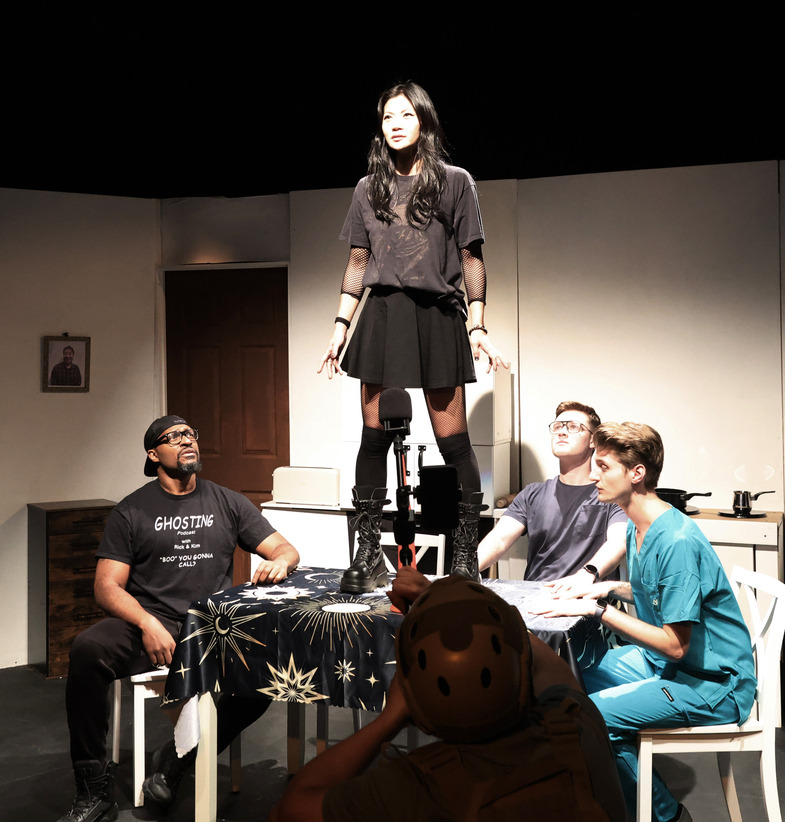
This Off-Broadway horror comedy delivers campy 1950s thrills in NYC’s Black Box theater scene.
Manhattan Repertory Theatre has struck theatrical gold with Tim Mulligan‘s wickedly entertaining “Point Loma,” a gleefully campy horror spoof that channels the best of 1950s B-movie schlock while delivering genuine scares and belly laughs in equal measure. Under Ken Wolf’s spirited direction, this off-Broadway gem transforms the intimate black box space of the Chain Theatre into a haunted playground where paranormal podcasters meet their match in a sinister San Diego hospice house.
Mulligan’s script is a love letter to classic horror tropes, filtering them through a contemporary lens of true-crime podcasting culture. The story follows Chad (Parker Jenkins), an earnest night-shift nurse caring for a comatose patient named Hank in a historic Point Loma home, and the chaos that ensues when paranormal investigators from the podcast “Ghosting” arrive to document the supernatural activity that has been terrorizing the day and night nurses. What begins as a seemingly straightforward ghost hunt spirals into a deliriously entertaining revelation about the house’s murderous past.
Jenkins brings a perfect blend of vulnerability and determination to Chad, grounding the increasingly absurd proceedings with genuine human emotion. His chemistry with Ian Brady’s exuberant boyfriend Todd provides the production’s emotional anchor, while Brady’s infectious enthusiasm for all things supernatural delivers some of the evening’s biggest laughs. Their relationship feels authentic even amid the supernatural mayhem, giving weight to the stakes when things turn chiller theater deadly.
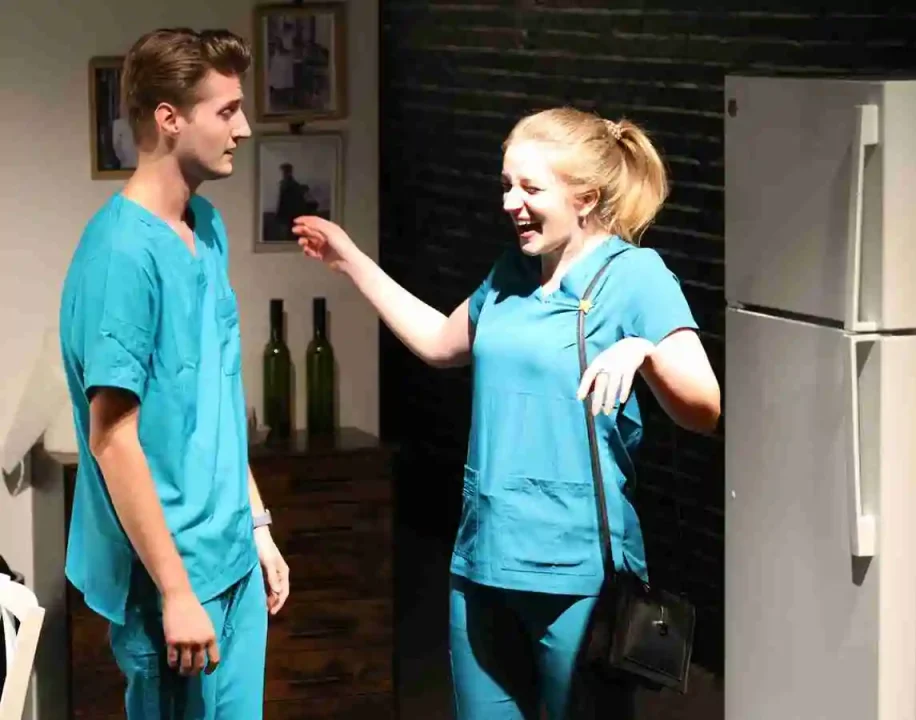
The paranormal investigation team proves equally compelling. Jevon Nicholson’s Rick perfectly captures the self-important bravado of a podcast host, while Michelle Park’s Kim brings depth to what could have been a stereotypical goth medium character. Mathew Hernandez rounds out the trio as Carl, the perpetually terrified cameraman whose reactions to the escalating horror provide consistent comic relief.
Jessica Luhmann deserves particular praise as Anna, the day-shift nurse whose wine-fueled breakdown and ultimate heroism steal several scenes. Luhmann navigates the character’s journey from professional competence to frazzled desperation to wine-bottle-wielding savior with impressive range and impeccable comic timing.
Dave Silberger‘s Hank is a masterclass in misdirection. For most of the evening, he lies comatose in his hospital bed, a seemingly helpless figure who gradually reveals himself as the production’s most chilling antagonist. Silberger’s transformation from invalid to serial killer is genuinely unsettling, providing the horror backbone that keeps the comedy from becoming purely frivolous. And the surprise ending with Silberger? Well, you’ll have to see for yourself.
Chelsea Clark, Nathan Cusson, and Patricia Griffith’s ensemble work as various ghostly manifestations adds layers of atmospheric dread. Their haunting presence throughout the production creates a practical sense of otherworldly menace that flawlessly complements the script’s blend of scares, moans, and laughs.
Wolf’s direction proves particularly ingenious in using the Chain Theatre’s intimate space to create a truly immersive theatrical experience. Rather than confining the action to the traditional stage area, the production transforms the entire venue into a haunted environment. Ghostly figures materialize from behind unsuspecting audience members, creating genuine jolts of surprise that ripple through the theater.
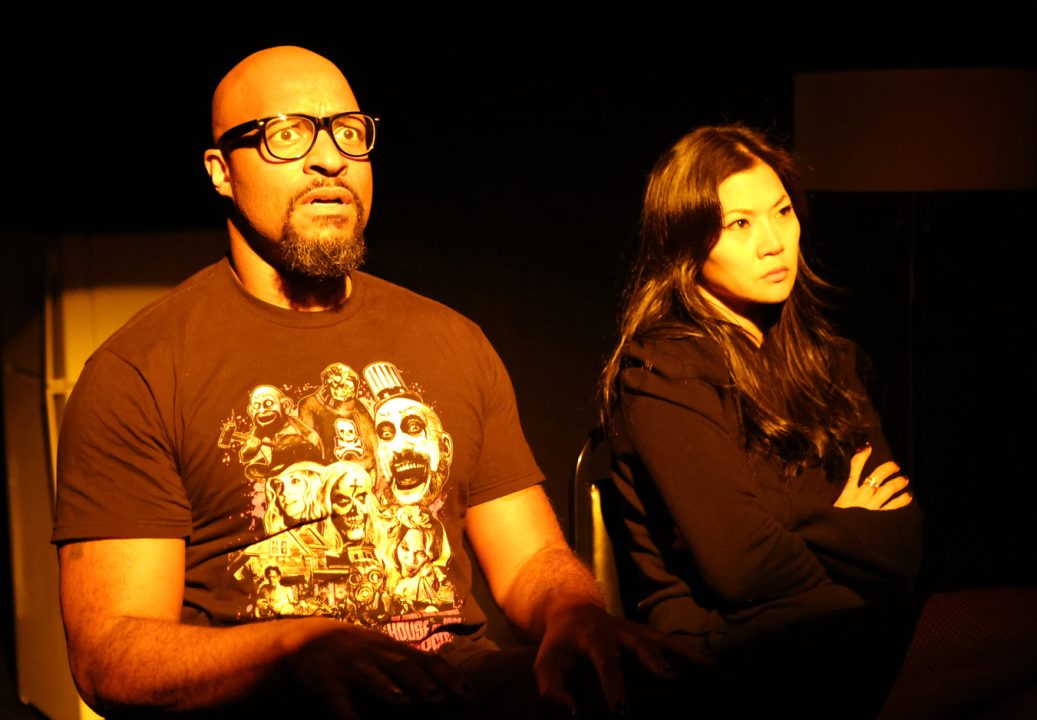
The paranormal investigators enter through the house aisles, their green-lit flashlights cutting through the darkness as they navigate between rows of spectators who suddenly find themselves part of the investigation. Most memorably, supernatural manifestations appear directly in front of the front row, placing audience members mere inches from the otherworldly action. This proximity creates an electric tension that no traditional staging could achieve – viewers become unwitting participants in the séances and supernatural encounters rather than passive observers.
The effect is genuinely disorienting and thrilling when ghostly voices echo from various points throughout the theater space. This immersive approach expertly balances the production’s tonal shifts, never allowing the horror elements to overwhelm the comedy or vice versa. The pacing builds momentum steadily through the first act’s establishing scenes to the séance centerpiece and the explosive final confrontation.
The technical elements deserve special recognition. The lighting design creates an appropriately moody atmosphere that can shift from cozy domesticity to spine-tingling terror at a moment’s notice while accommodating the challenges of illuminating action throughout the audience space. Particularly effective are the sequences involving supernatural manifestations, where shadows and strategic illumination create genuine unease without relying on cheap jump scares, whether occurring on stage or emerging from the theater’s periphery.
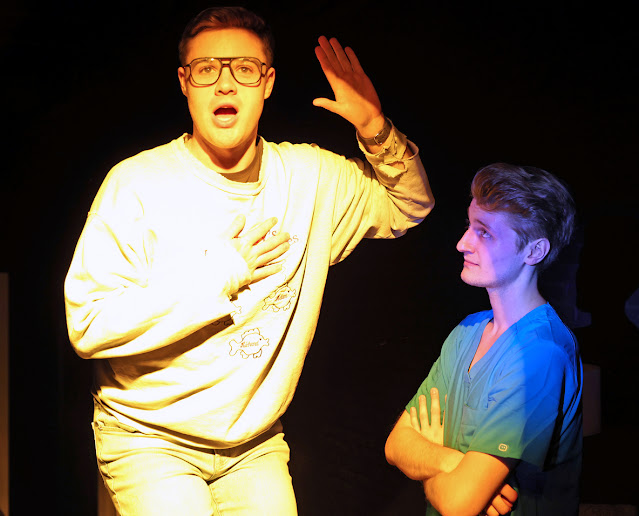
The sound design proves equally crucial to the production’s success. From the eerie creaks and unexplained thuds that plague Chad’s night shifts to the ghostly voices emanating from Bluetooth speakers and séance trumpets positioned throughout the space, the audio landscape creates an immersive haunted house experience. With its deliciously retro sensibility reminiscent of classic horror film composers, the musical underscoring perfectly captures the B-movie aesthetic Mulligan and Wolf are clearly celebrating while enhancing the feeling that supernatural forces have invaded the entire theater.
What makes “Point Loma” particularly successful is its affection for its source material and characters. Rather than simply mocking horror conventions, Mulligan’s script embraces them while finding fresh angles through the podcast framing device. The play’s exploration of how we consume true crime and paranormal content feels timely without being heavy-handed.
The immersive staging elevates this material beyond traditional theatrical boundaries. When audience members share space with living characters and supernatural entities, the fourth wall doesn’t just break – it dissolves. This creates a unique theatrical experience where the line between performer and audience, reality and supernatural fiction, becomes thrillingly blurred.
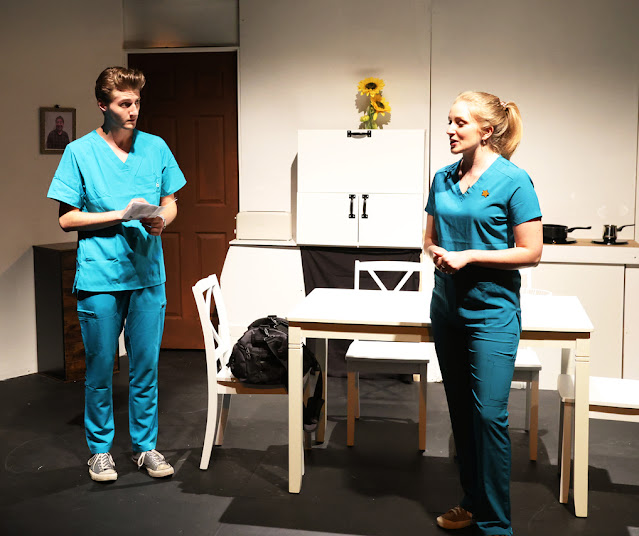
“Point Loma” succeeds as both a loving homage and an effective horror-comedy in its own right. Manhattan Repertory Theatre has delivered a thoroughly entertaining production that will satisfy horror aficionados and newcomers. In a theatrical landscape often dominated by heavy drama, this delightfully demented romp offers pure, unapologetic fun—exactly what off-Broadway theater should provide. It is enhanced by an immersive staging concept that makes every seat in the house feel like the front row of a supernatural encounter.
Wolf clearly understands that effective horror-comedy requires treating both elements seriously, and his cast follows suit with performances that never wink at the audience, even when they’re performing literally within touching distance of patrons. For theater lovers seeking an innovative, entertaining escape into the deliciously macabre, “Point Loma” delivers thrills, chills, and laughs equally.
Source: Read
Playwright: Tim Mulligan
Director and Production Designer: Ken Wolf
Stage Manager: Rebecca Batson
Sound/Light Board Operator: Verena Lee
Parker Jenkins as Chad
Jessica Luhmann as Anna
Michelle Park as Kim
Jevon Nicholson as Rick
Mathew Hernandez as Carl
Ian Brady as Todd
Dave Silberger as Hank
Chelsea Clark as Ghost and Ensemble
Nathan Cusson as Ghost and Ensemble
Patricia Griffith as Ghost and Realtor
Produced by: Manhattan Repertory Theatre
Presented at: The Chain Theatre
312 West 36th. Street
New York, NY 10018
For tickets and information, go to https://witchlandplay.com/point-loma/
Publicity by: Scotti Rhodes Publicity